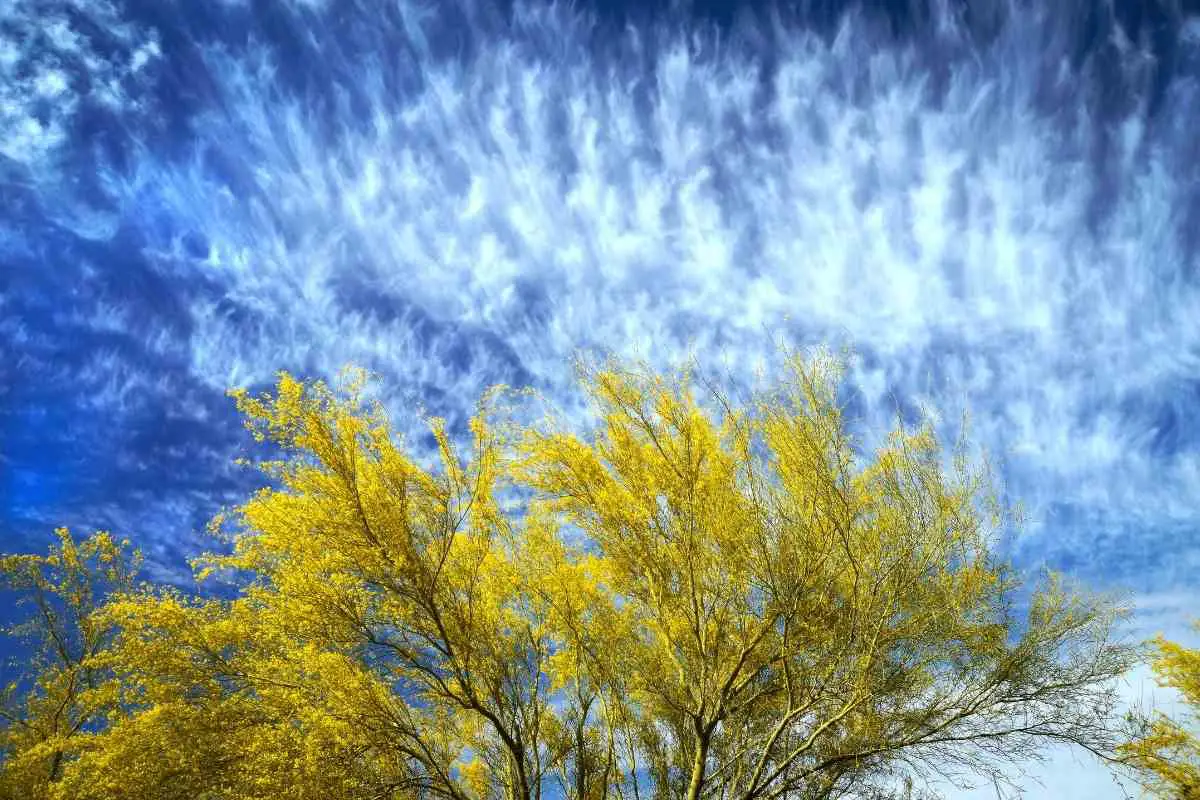A tree with green bark is not a common sight.
If you come across one, you might think the tree is infected with something or covered in fungi.
However, that is not the case. These trees are entirely natural and stay green for their whole lives.
In this article, we will take you through five types of trees with green bark, their kinds, and the various uses of tree bark.
Understanding Bark
Before we get to the various types of trees with green bark, it’s essential to learn what makes the shell of a tree and how it gets its green color.
The bark of a tree is its outermost layer which protects it from predators, sun damage, and other environmental hazards.
The color of a tree’s bark can be affected by several factors, including its species, age, and even the season.
What Is It Made Of?
The outer bark is composed of dead vascular tissue (xylem) pre-formed during the previous growing season when water was plentiful.
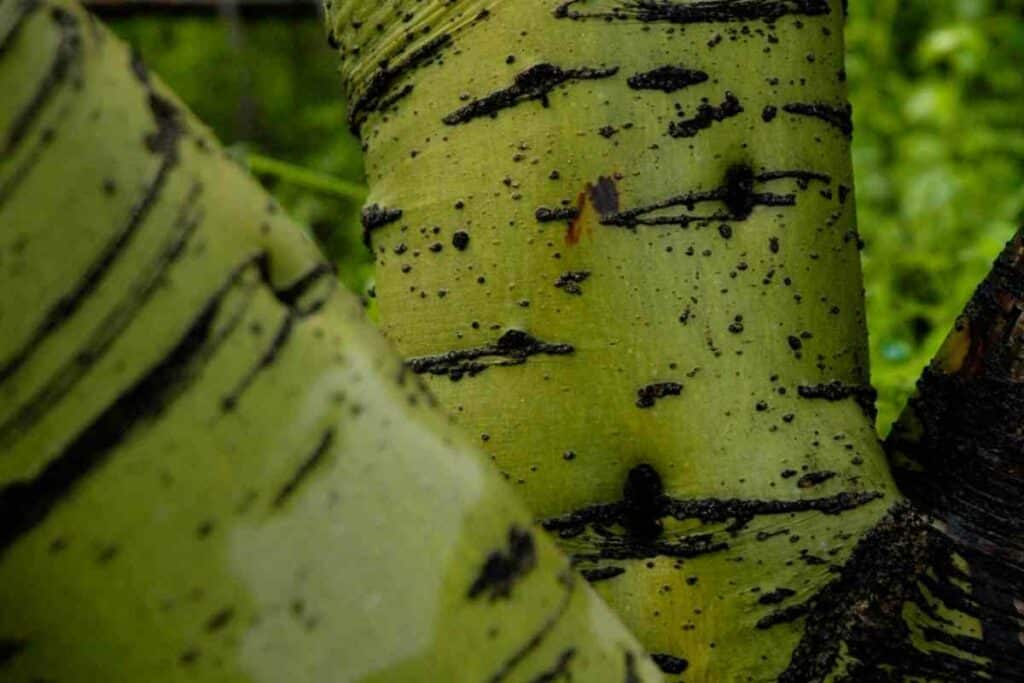
Water storage can occur in these cavities throughout the year, but more so when droughts arise during summer.
The inner bark lies outside these vascular cambium tissues and consists of relatively thin-walled cork cells (sclerenchyma).
Cork cells may be found between bundles of xylem vessels called tracheids and forms a substantial portion of the overall cross-sectional area (up to 30%) in some coniferous species such as redwoods (Sequoia sempervirens).
Bark Color
In general, trees that grow in areas with a lot of sunlight tend to have darker bark than those found in shady areas.
Also, trees that grow faster in warmer weather have darker bark because they need more protection from the sun.
What Makes the Bark Color Green?
The green color of the bark of trees is due to the chlorophyll contained within it.
Chlorophyll is a pigment present in plants that helps them convert light energy into chemical energy. This energy is used by the plant’s cells to carry out its daily activities.
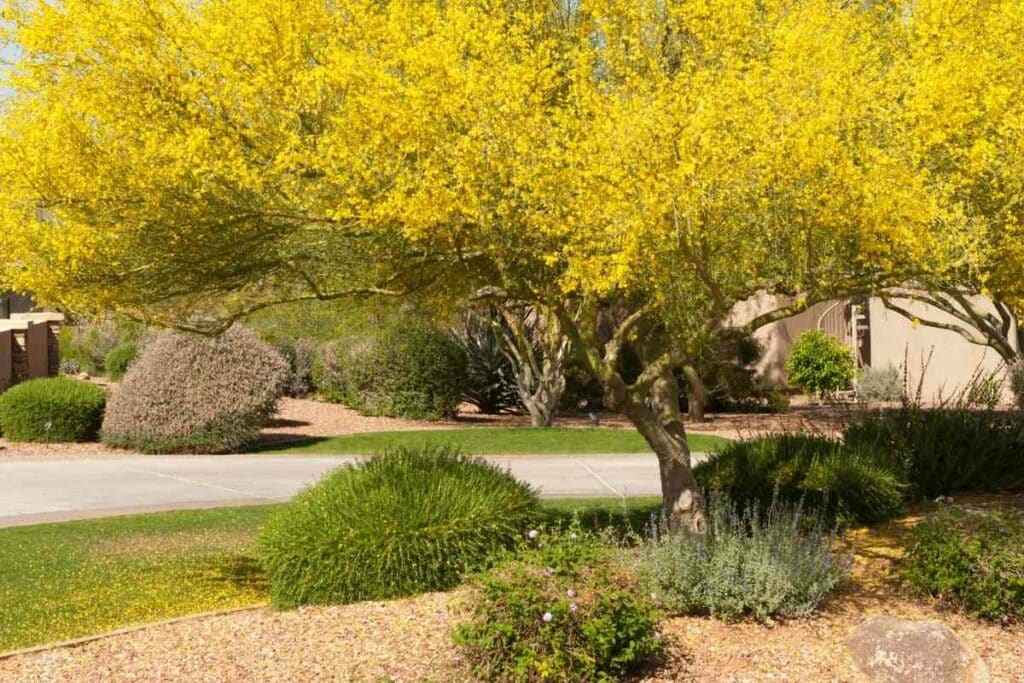
The chlorophyll in trees contains magnesium and iron, which gives them their green color.
Chlorophyll is present throughout the tree, but it’s primarily concentrated in the outer layers of its bark.
This is because these outer layers are exposed to sunlight and need to absorb as much light as possible in order to produce more energy.
Bark Texture
As a tree grows older, its bark becomes tougher and thicker to protect it from predators such as insects or animals.
The bark texture also varies depending on where it is on the tree; branches have smoother bark than trunks because they are more exposed to sunlight and wind damage.
5 Trees With Green Barks
1. Palo Verde Trees
The Palo Verde trees are a unique species with a high amount of chlorophyll in their bark.
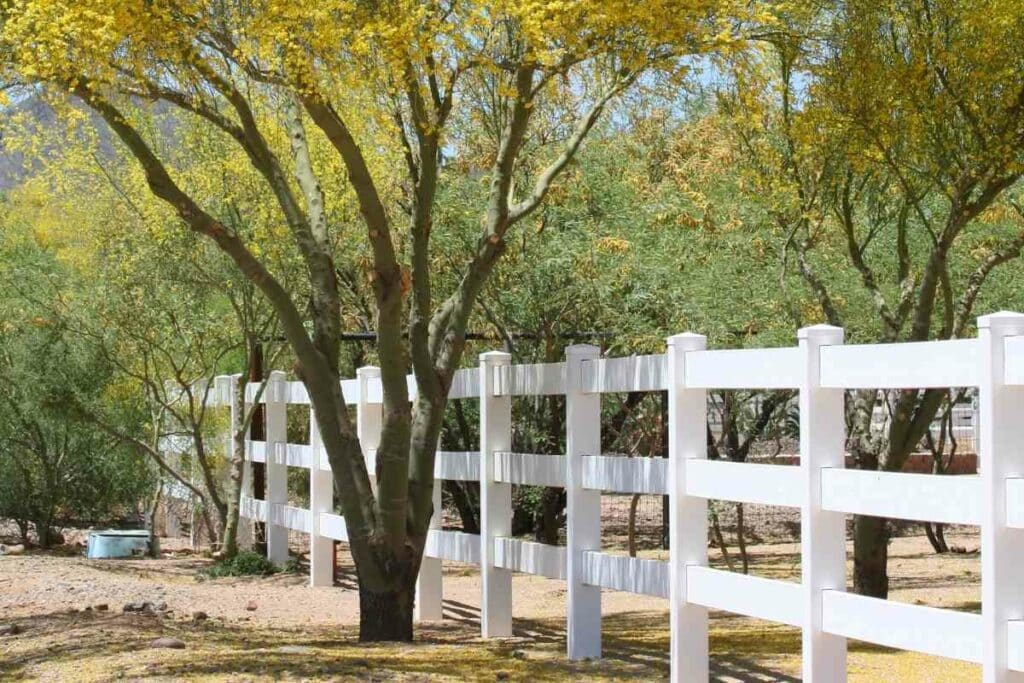
This gives their tree bark an unusual appearance, with many having green trunks as well as having different shades mixed in.
Fun Fact: The palo verde tree’s fruit is edible and tastes sweet like dates; it can be eaten fresh or dried. They are also used in the manufacturing of sweets and drinks. The leaves of palo verde trees can be used as an herbal tea to treat bronchitis, tuberculosis, and other lung diseases.
2. Foothills Palo Verde
This type of Palo Verde tree has a green trunk with varying shades of yellow, and they are characterized by pods growing around the seeds as well as tiny leaves.
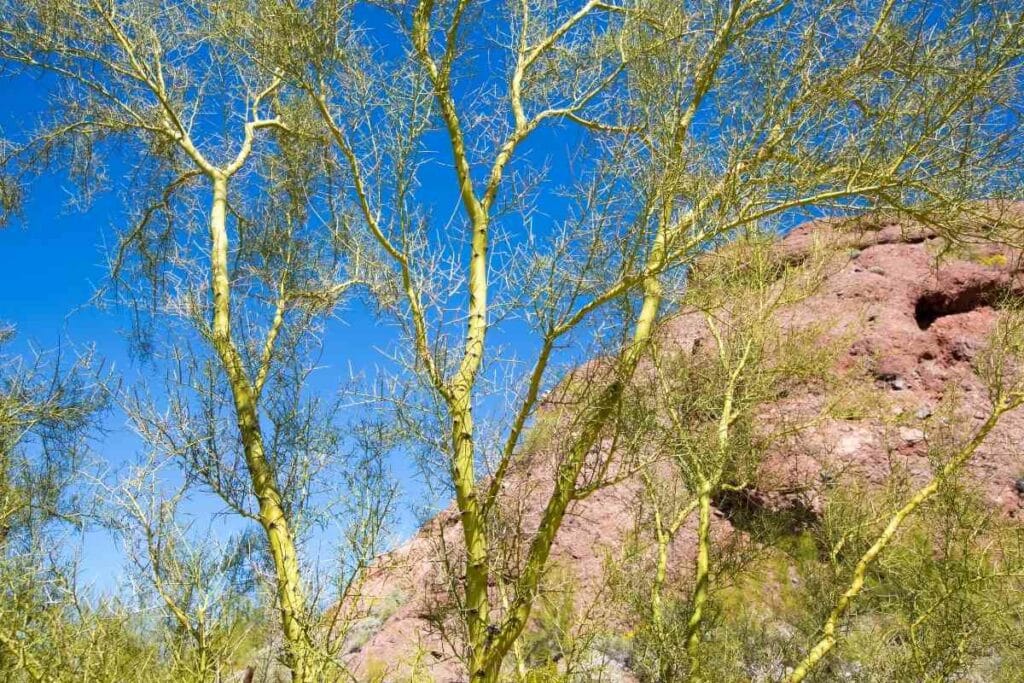
The leaves of this plant turn a luminescent yellow when they blossom, and its branches are green in color. The name of this tree is also given to it due to its bark—Palo Verde is Spanish for “green stick.”
The trees in the Palo Verde family are commonly found in upland areas with an abundance of coarse soil.
They can have an incredibly long lifespan of over 100 years, and the oldest Foothills Palo Verde trees live as long as 400 years.
3. Blue Palo Verde

The Blue Palo Verde has shades of gray and green bark, with the trunk usually being blue and green due to how the tree grows around water.
They also have pods that usually grow with Foothill Palo Verde, but its outer shells are more rigid than other trees in the same family.
You can primarily find Palo Verde trees in desert areas such as bajadas and washes because the blue Palo Verde requires a lot of water for sustenance.
4. The Sonoran Palo Verde
The Sonoran Palo Verde has varying gradients of blue and green bark. It is taller than its counterparts, standing at 30 feet tall.
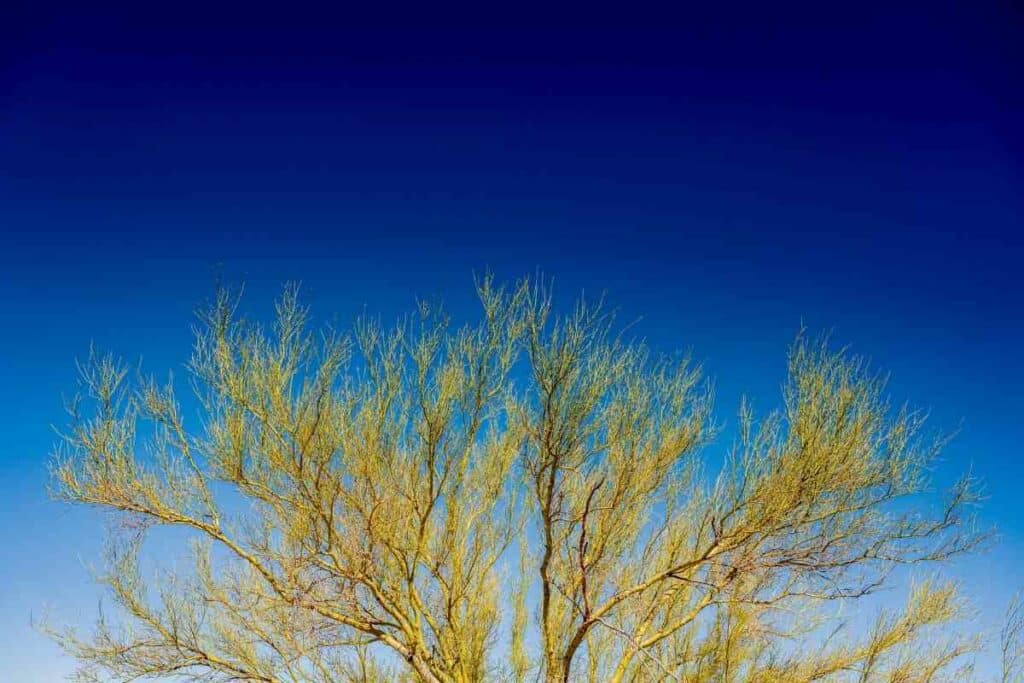
The color of the leaves of this tree is bluish-green, but they can also be silver or grayish-green.
They are very oblong in shape—this contrasts nicely with the flowers, which are bright yellow. Together, this gives the tree a unique appearance.
The tree is often used as a food source because it bears green legumes around the winter and summer
5. The Mexican Palo Verde
The Mexican Palo Verde is the fastest growing in the family of Palo Verde, and its bark has a unique characteristic.
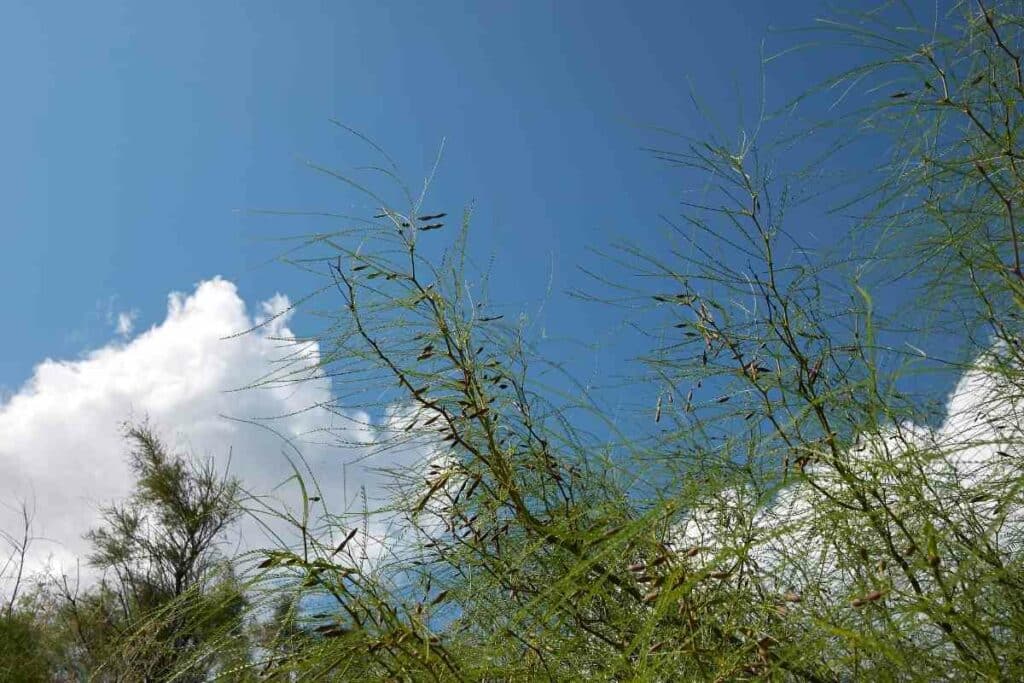
Once it reaches a certain age, the bark turns from green to gray.
This tree thrives in the warmer regions around the world, and it does not require much water to survive. Mexican Palo Verde is the most resistant of all of the Palo Verde family trees.
It can also survive in various soil types and does well in different kinds of weather.
Even Better – Since it requires low amounts of water, the tree can function well even with a limited amount of rain. It can last well in drought-heavy climates, just like its relative plants.
The Use of Palo Verde Trees
Blue Palo Verde’s beans have been famously used as a food source, and the tree’s wood is used to produce various utensils such as ladles.
The flowers of Blue Palo Verde trees are edible and can either be cooked or eaten fresh.
Palo Verde trees also have a fair bit of medicinal use.
They have been used for antibacterial and antiseptic purposes. The tea made from leaves can have laxative effects and has been used to treat headaches and stomach pain as well.
Benefits to the Environment
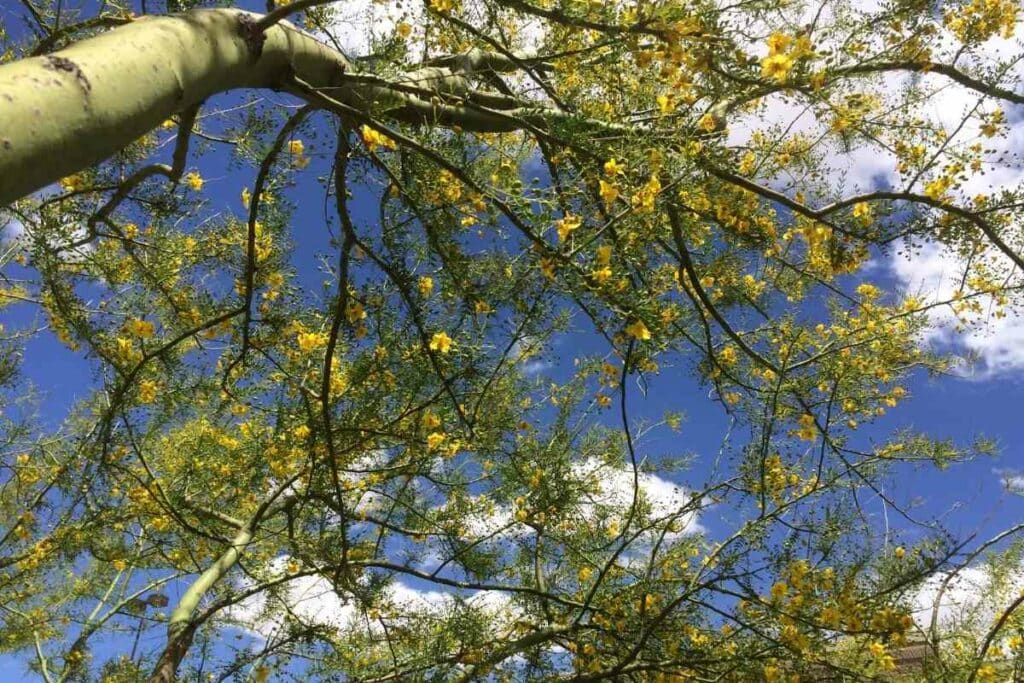
Palo Verde trees help nurse plants such as the Saguaro cactus.
These plants’ leaf litter can provide a root zone that is abundant with nitrogen. This helps promote plant growth significantly.
The blooms of the foothills of Palo Verde are known to attract many pollinators and bees.
The canopy of these trees makes for the perfect shade for animals and birds native to the areas where they grow.
Mexican Palo Verde has very finely textured foliage.
As a Result – It can support various kinds of plants underneath its shade. It is also a trendy choice for a centerpiece tree in gardens and is often used to stabilize the soil in the environments it grows.
What You Can Get Out Of The Wood
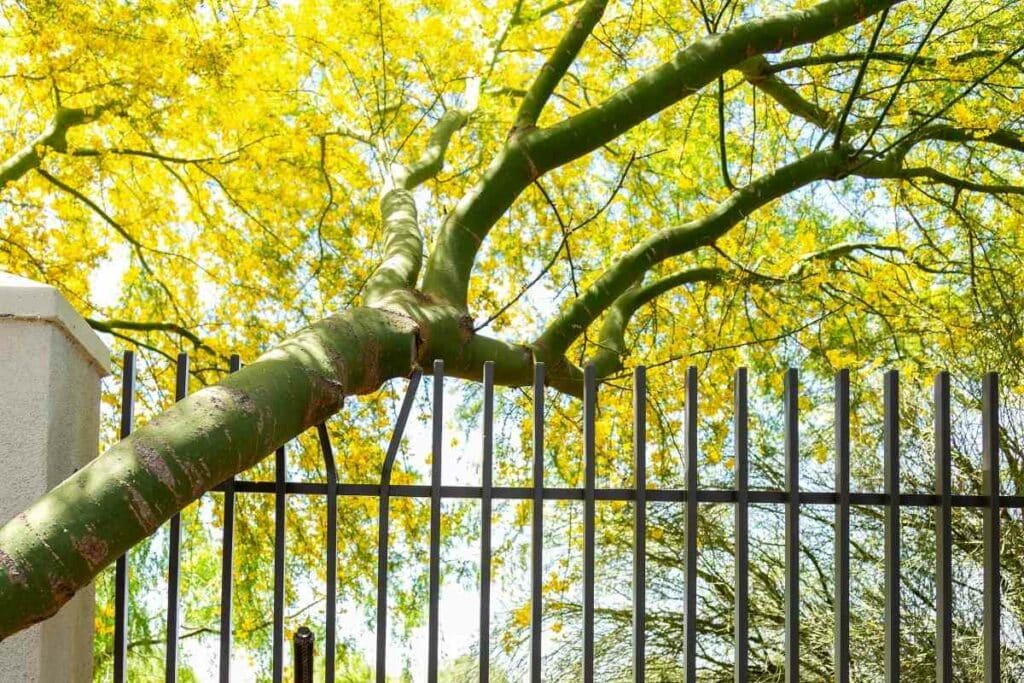
- Palo Verde wood is dense but not incredibly dense like ironwood. The grain of this wood resembles aspen trees, and due to the porous build of the wood, it burns faster. This makes it very good for kindling fires.
- Palo Verde’s wood has a quicker harvesting turnaround because its wood can be easily cut into pieces.
- Foothill Palo Verde is a valuable source of wood and timber. It is regularly used to make timber products such as furniture.
- Mexican Palo Verde has been classically used for firewood, livestock fodder, and charcoal.
- Palo Verde wood fetches a high price due to it being a rarer type of wood, which is helpful in raising the worth of the final product. It is typically used for finishing after being appropriately sanded.
- While the wood does not have the strength of hardwoods, it is still great for constructing doors, windows, and other structures, but it does not work well elsewhere due to being unable to withstand heavy loads.
Gardening
Palo Verde trees, especially Mexican Palo Verde trees, have been famously used in gardening.
They have rapid growth to a point, very sturdy branches, and long-lasting blooms.
This is particularly true if you live in a hot, dry climate that does not support much plant or tree growth.
Palo Verde trees thrive in these kinds of environments because the more porous a tree is, the more rainwater it can absorb.
Palo Verde trees are quite porous, and their bark can absorb and retain an impressive amount of water.
The flowers of this tree will also attract many other kinds of insects to your garden, promoting a diverse environment.
Final Thoughts
The beautiful green bark of the Palo Verde has been a heralded sight for years—the rarity of the tree makes it even more valuable.
Palo Verde trees are incredibly resistant to droughts and can last for centuries.
Now that you know the many benefits of trees with green barks, the next time you spot one, take back a part of its exterior with you, if it is allowed.
Keep it as a souvenir or simply boil it to make yourself a cup of delicious herbal tea.
